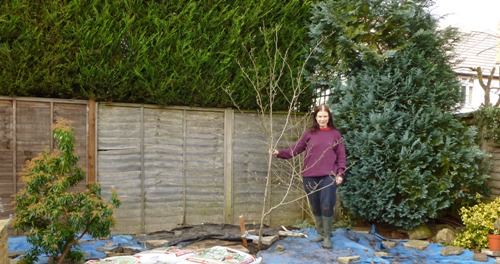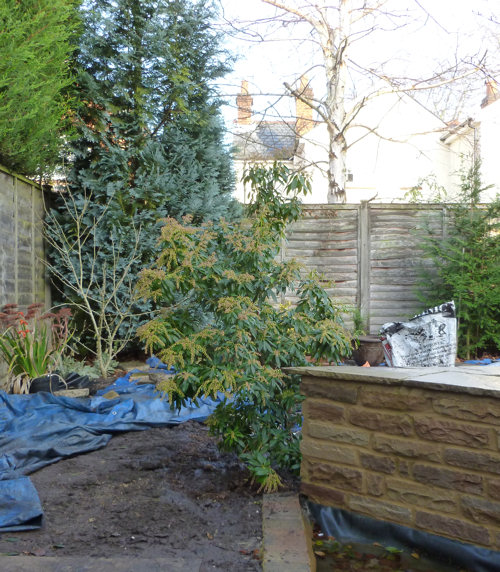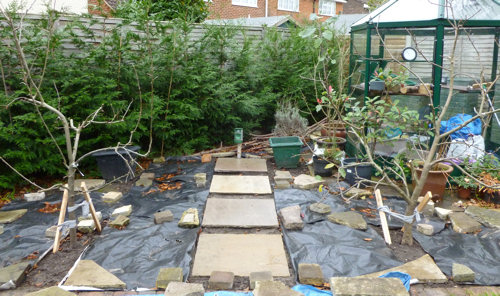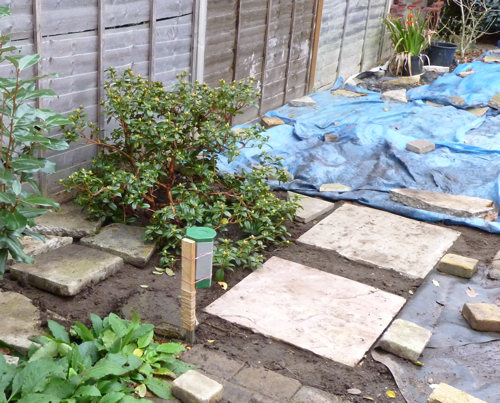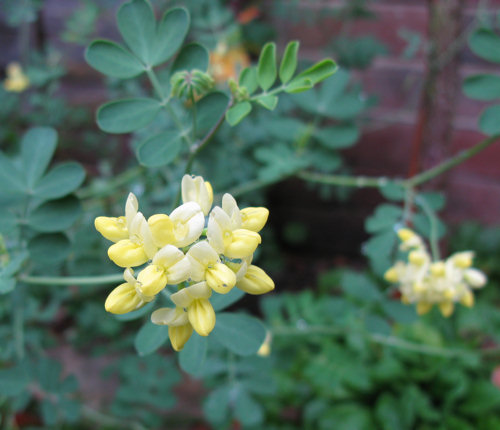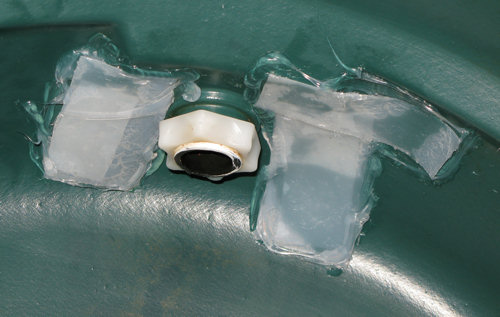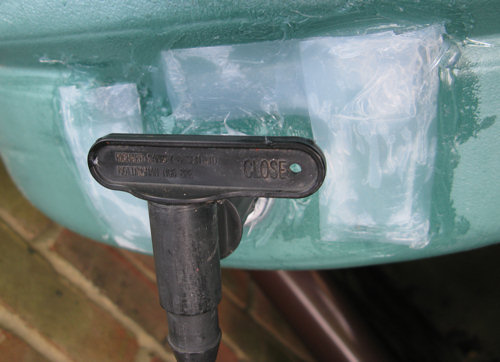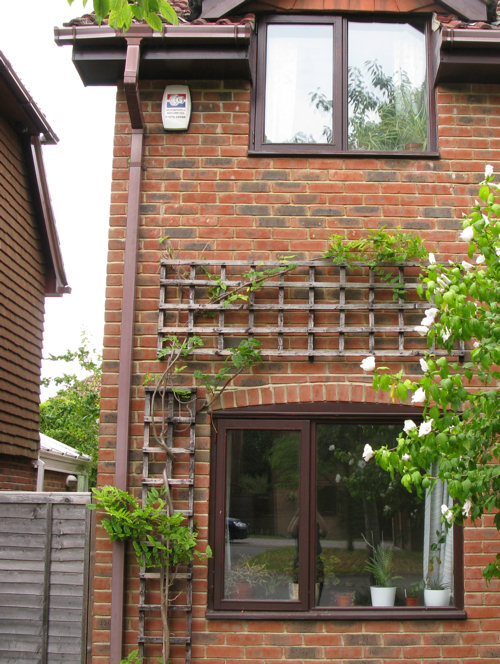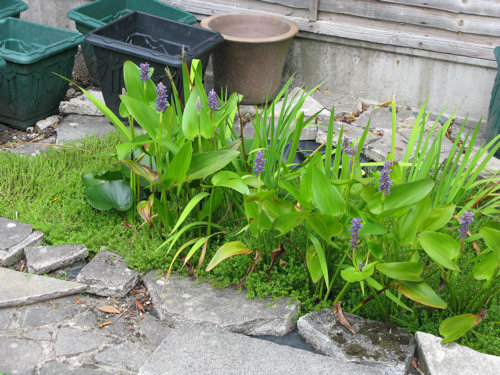Today was a mild day with no rain forecast and I decided that now was the perfect opportunity to move the apple trees, even though they have not lost quite all their leaves. I moved Discovery first because it was nearer the destination holes than Charles Ross. First I dug a trench all round the tree.
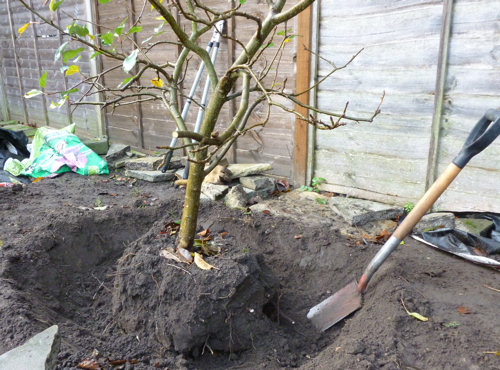
Digging a trench around the tree
Then I started shoving my spade under the root ball until the tree could be gently pushed over. I thought it would be heavy to lift, but it was very light. I tried to take as much earth with the roots as I could, but much of it fell off when I picked the tree up and carried it to the hole.

The Discovery tree, laid in its destination hole
You can see that the root ball is quite small. I hammered a stake in at about 45 degrees like the books say you should, and tipped in two bags of organic compost as well as some soil, stamped it down and tied the tree to the stake with half a pair of old tights. The books say you should use rubber ties, but I should think tights would be just as good, and cheaper. The books also say that you should have the stake facing the prevailing wind, but I have no idea where the prevailing wind is. In my garden, things fall over in all directions. Neither do I know what they mean by positioning the stake into the prevailing wind. Do they mean that if the wind is coming from the north, the end of the stake that isn’t buried in the ground should be north of the end that is buried in the ground? Or the other way around? They don’t explain. So I decided to put the stake in at a direction that I thought would be aesthetically pleasing. One thing I am absolutely sure about, though, is that a stake is necessary. Compared with the Leylandii roots, the apple tree roots were pretty feeble.
Then I dug up Charles Ross and moved him too.
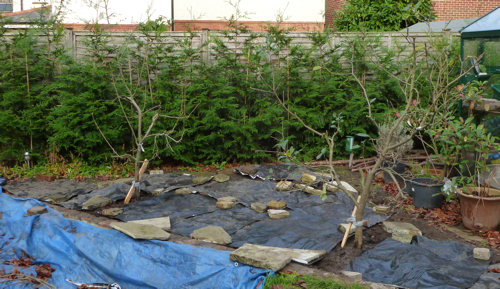
The apple trees, both planted in their new positions.
I ended up positioning both trees slightly to the right of where I had originally planned to put them. Charles Ross was a bit too close to the hedge. I also pruned them both a bit, but not very much. I am very pleased with how the trees look. My garden is beginning at last to look like a garden again.
But the side fence now looks very exposed.

The side fence, very bare
Moving the apple trees was a lot easier than I thought it would be. I thought the roots would be harder to cut through and that I would have difficulty lifting the trees and carrying them to their destination. What was quite difficult was the planting. It is quite hard to hold an apple tree upright while shovelling soil into its hole. It is also difficult if you want to see what the apple tree looks like from the patio before you commit to planting it that way round. The easiest way to deal with the soil is to heap it up all around the hole, and then scrape it into the hole with the side of your foot, while holding the tree up. When enough soil is in there to keep the tree vertical, you can then nip off and take a look from a distance.
However, despite the task being easier than I thought, I am now suffering from an assortment of aches and pains and have taken some ibuprofen. I hope that I will be recovered enough next week to either lay some stepping stones, or plant something else.
